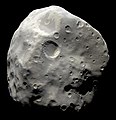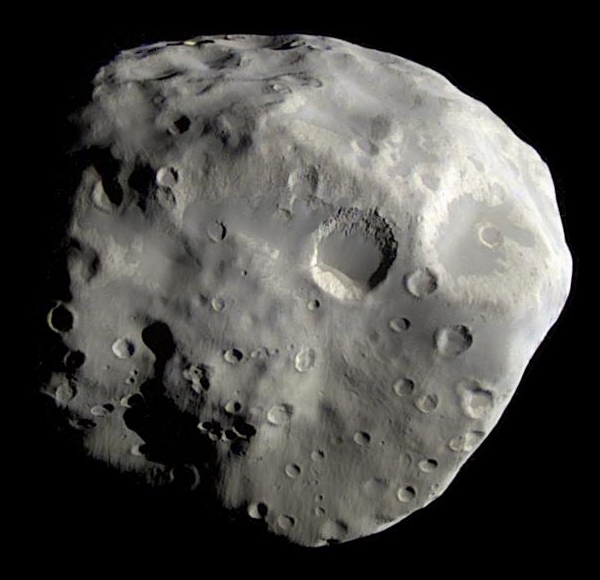Файл:PIA09813 Epimetheus S. polar region.jpg — Вікіпедія
PIA09813_Epimetheus_S._polar_region.jpg (600 × 580 пікселів, розмір файлу: 153 КБ, MIME-тип: image/jpeg)
Історія файлу
Клацніть на дату/час, щоб переглянути, як тоді виглядав файл.
| Дата/час | Мініатюра | Розмір об'єкта | Користувач | Коментар | |
|---|---|---|---|---|---|
| поточний | 22:49, 5 січня 2013 |  | 600 × 580 (153 КБ) | Antonsusi | Turn back ok, but the margin makes only a smaller, not optimised visible size of the object on pages. |
| 07:59, 19 грудня 2012 |  | 680 × 640 (222 КБ) | WolfmanSF | Reverted to version as of 17:18, 11 January 2008 - Solar System objects are normally portrayed with north up, which means solar illumination comes from the side; also, there's no artistic advantage to eliminating the margin | |
| 02:39, 9 січня 2011 |  | 580 × 600 (146 КБ) | Antonsusi | cropped, turned upright | |
| 17:18, 11 січня 2008 |  | 680 × 640 (222 КБ) | WolfmanSF | replace with processed NASA image |
Використання файлу
Такі сторінки використовують цей файл:
Глобальне використання файлу
Цей файл використовують такі інші вікі:
- Використання в af.wikipedia.org
- Використання в als.wikipedia.org
- Використання в ar.wikipedia.org
- Використання в ary.wikipedia.org
- Використання в arz.wikipedia.org
- Використання в ast.wikipedia.org
- Використання в as.wikipedia.org
- Використання в be.wikipedia.org
- Використання в bh.wikipedia.org
- Використання в bs.wikipedia.org
- Використання в ca.wikipedia.org
- Використання в ckb.wikipedia.org
- Використання в de.wikipedia.org
- Використання в el.wikipedia.org
- Використання в en.wikipedia.org
- Cassini–Huygens
- Epimetheus (moon)
- Wikipedia:Selected anniversaries/December 18
- Timeline of discovery of Solar System planets and their moons
- Moons of Saturn
- List of Solar System objects by size
- Naming of moons
- List of natural satellites
- User:Dabomb87/Sandbox
- Talk:Solar System/Archive 7
- Wikipedia:Main Page history/2012 December 18
Переглянути сторінку глобального використання цього файлу.


 French
French Deutsch
Deutsch

